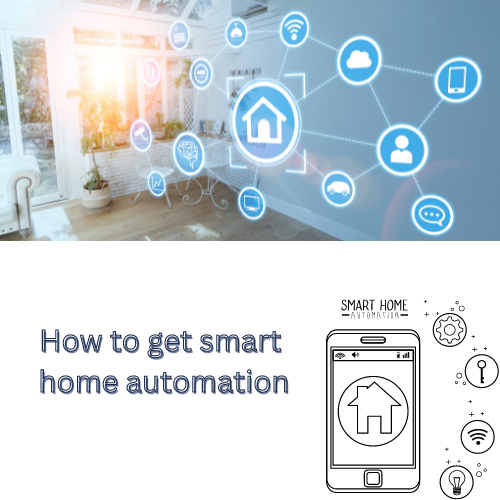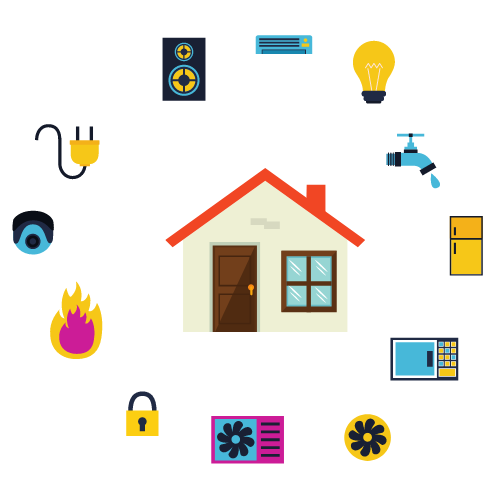
Outline Table
| Section | Heading | Subheadings |
| Introduction | What is Smart Home Automation? | Definition, Importance |
| The Basics of Smart Home Tech | Components of Smart Home Automation | Devices, Connectivity, Control Systems |
| Advantages of Smart Home Automation | Benefits and Impact | Convenience, Energy Efficiency, Security, Customization |
| Popular Smart Home Devices | Key Smart Home Appliances and Systems | Smart Thermostats, Lighting, Security Cameras, Voice Assistants |
| How Smart Home Automation Works | Automation and Control | Remote Access, Voice Commands Scheduling |
| Considerations for Smart Home Buyers | Factors to Consider | Compatibility, Scalability, Privacy, Cost |
| Future Trends in Smart Home Technology | Innovations and Predictions | AI Integration, Sustainability, Interoperability |
| Conclusion | Embracing the Future of Smart Homes | Summary, Closing Thoughts |
What is smart home automation?
Origination.
What is smart home automation.
In today’s digital era, smart home automation become a very popular trend, which help in transforming the traditional homes into modern homes techniques, and this help in interconnected living spaces. but what exactly does this smart homes automation mean, and why is it gaining more and more popularity? Let’s discuss the basics techniques and also discover and explore the amazing and fascinating world of smart home technology.
The Basics of Smart Home Tech
smart hoe automation have connection of various devices and system in a home making them remote monitoring and controlling. These systems have smart devices which equipped with smart sensors, including Wi-Fi connectivity, and as well as ability to communicate with each other. The Key components of smart home technology include.
- Devices: security cameras, lighting, door locks, smart thermostats, and voice assistants are the mostly used examples of smart home devices.
- Connectivity: Devices connect using the wireless protocols such as ZigBee, Wi-Fi, or Z-Wave, which having for seamless connection and control.
- Control Systems: The Centralized hubs or application act as command centers, which allowing the users to manage and automate the devices from a single interface.
Advantages of Smart Home Automation
The adoption of smart home technology have many advantages such as:
- Convenience: Control devices remotely or through the smartphone application or making the voice commands, making the daily tasks easier.
- Energy Efficiency: Smart thermostats and lighting can also help to optimize the energy usage, which reducing the utility bills.
- Security: Integrated security systems gives the real-time alerts and also help in monitoring, and increasing the home safety.
- Customization: Users can personalize their settings and also make routines to settle their preferences, which helps in enhancing the overall comfort zone
Popular Smart Home Devices:
Smart home automation have a variety of devices:
- Smart Thermostats:
- It helps in Regulate the temperature which based on occupancy and the weather conditions, which helps in saving energy.
- Smart Lighting:
- It helps in Adjust the brightness and the color with the help of remote, it creating the ambiance and also help in saving the electricity.
- Security Cameras:
- We can Monitor the home by using the remote and also get the alerts for any unusual activity which is done at home.
- Voice Assistants:
- The Control devices helps by using the voice commands system, this features enhancing the accessibility and convenience.
How Smart Home Automation Works

- Remote Access:
- It helps to Check and control the devices of you home from anywhere if you have an internet connection system.
- Scheduling:
- It helps to schedule the home. Automate routines such as turning the lights on and off or adjusting the room condition which is called thermostat settings this all based on a schedule.
- Voice Commands:
- Use voice assistants such as Alexa or Google Assistant to control devices which are hands free. In this all the work is completed by using the voice of the person there is no need to get up and do the work by oneself.
Considerations for Smart Home Buyers
Before turning the home into smart home technology, consider these following points for better work.
- Compatibility:
- Ensure devices you are installed in home are compatible and relatable with the current existing systems and follow the protocols.
- Scalability:
- Plan for next future expansions if there will be any need and integrations as if there is needs evolve.
- Privacy:
- Understand all the data collection practices and make sure the privacy protections and security are in a place.
- Cost:
- The foremost point is to evaluate the upfront costs and potential that helps in long-term savings to make informed all kind of future decisions.
Future Trends in Smart Home Tech
The future of smart home technology holds the too much exciting possibilities:
- AI Integration: By Enhancing the AI capabilities will make more personalized and intuitive new experiences.
- Sustainability: sustainability help in Greater focus on energy efficiency and also in eco-friendly solutions.
- Interoperability: Interoperability help to improve the compatibility between devices and platforms for the seamless integration system.
Conclusion:
In the bottom line, smart home automation is changing and reshaping the way we live, it presenting the unprecedented convenience, showing the energy efficiency, and security system. By using this technology homeowners have to create customized living spaces that are more suitable and adapt to their needs and preferences, showing the way for a more connected and fascinating future.






Very informative
Informative